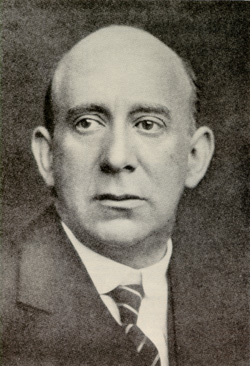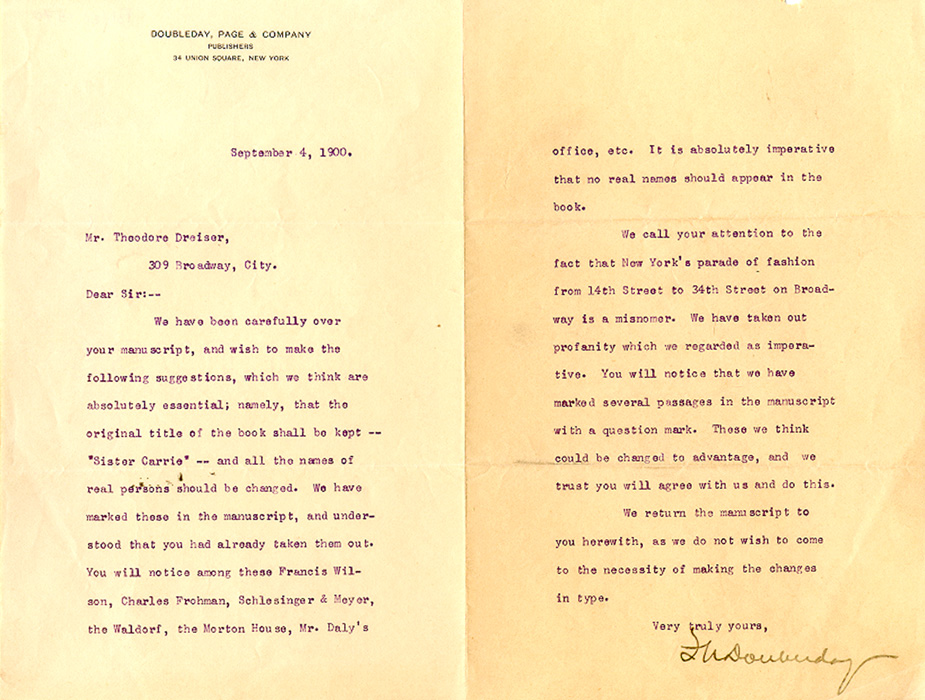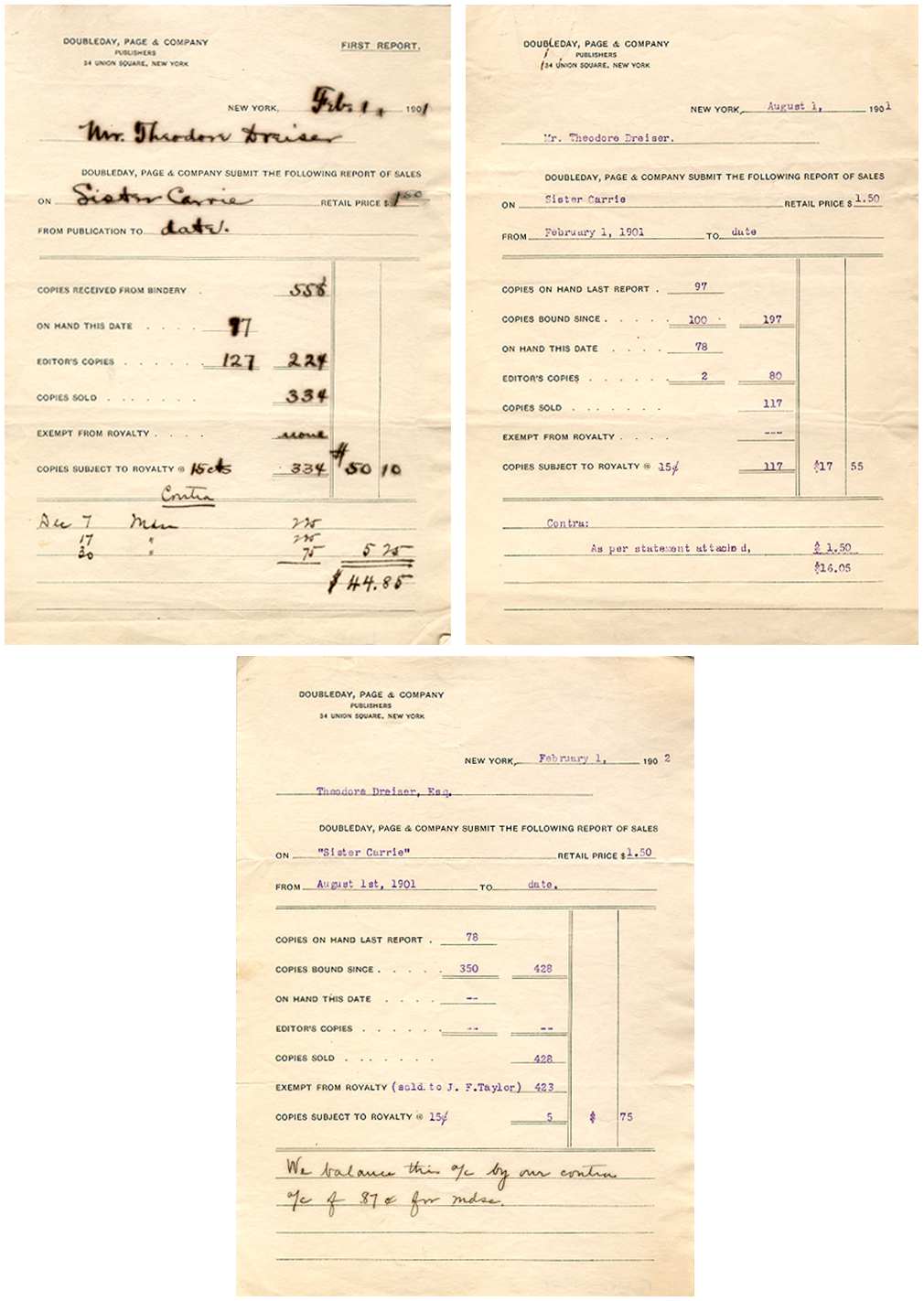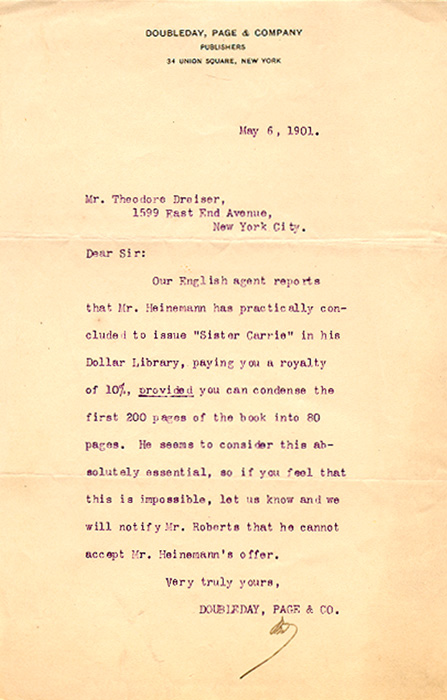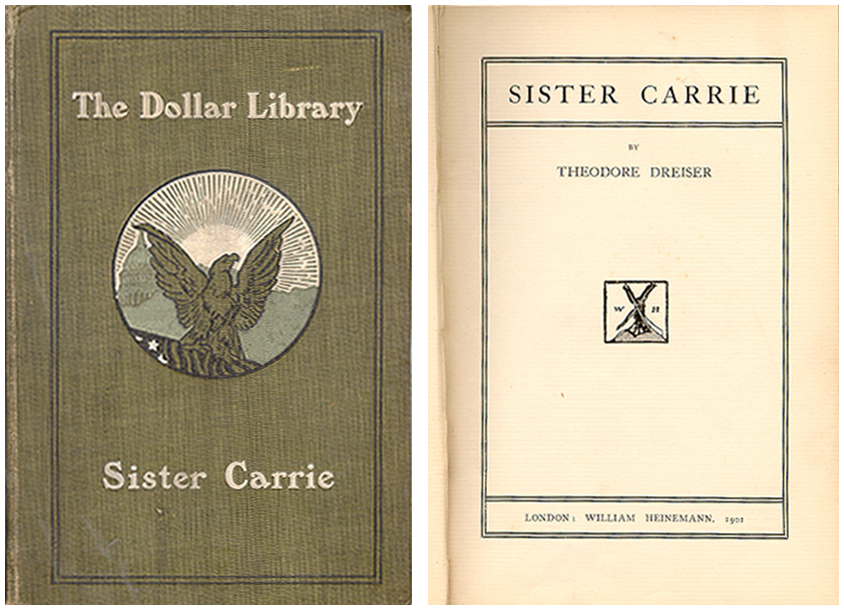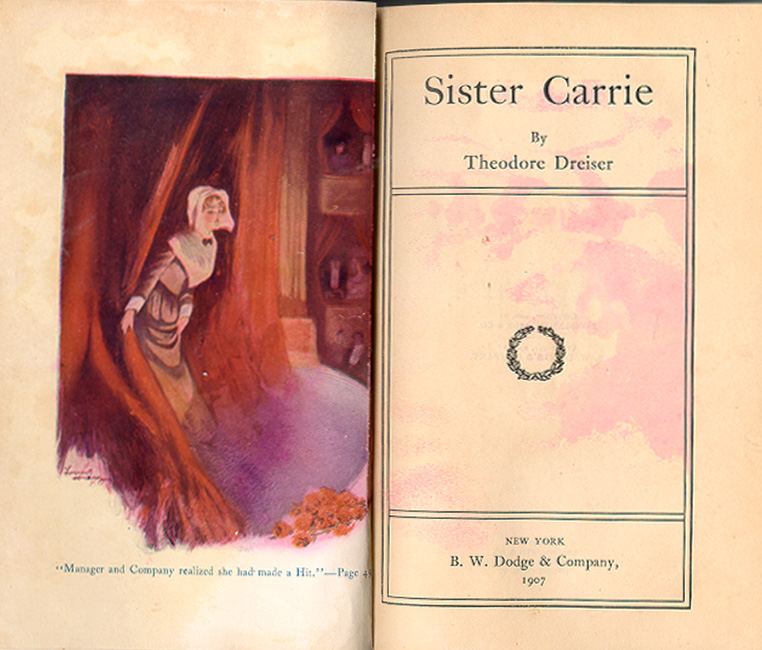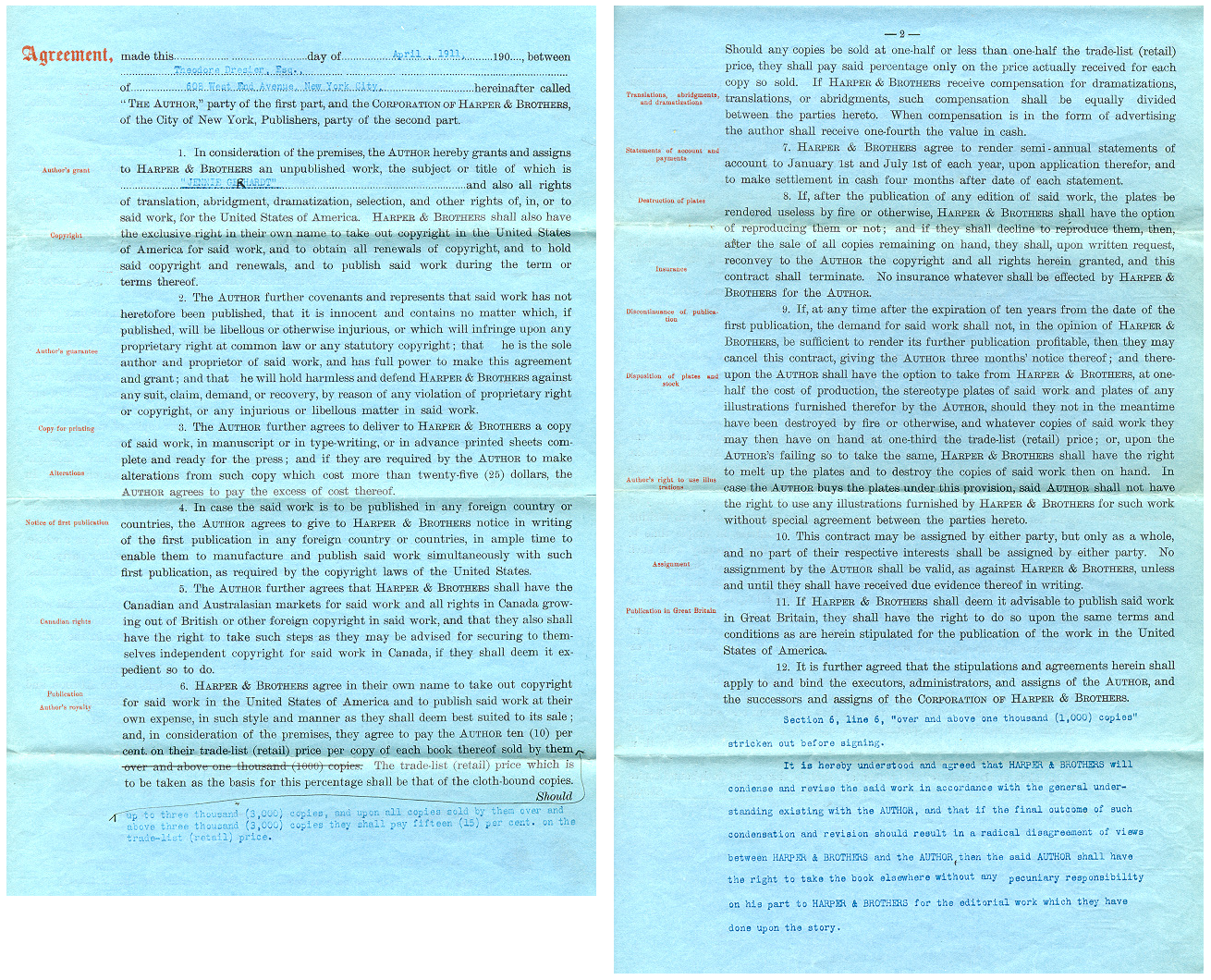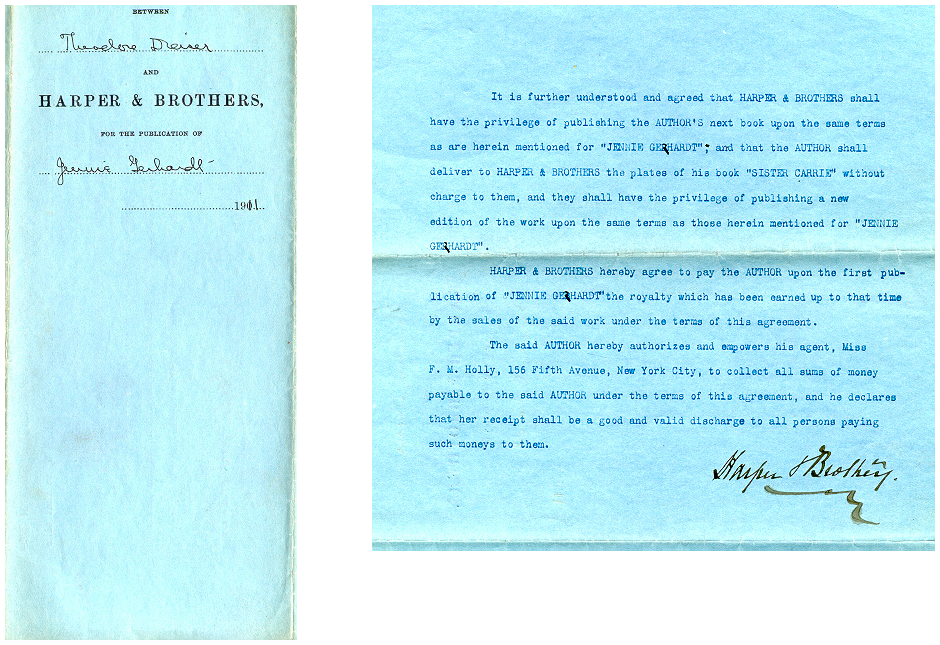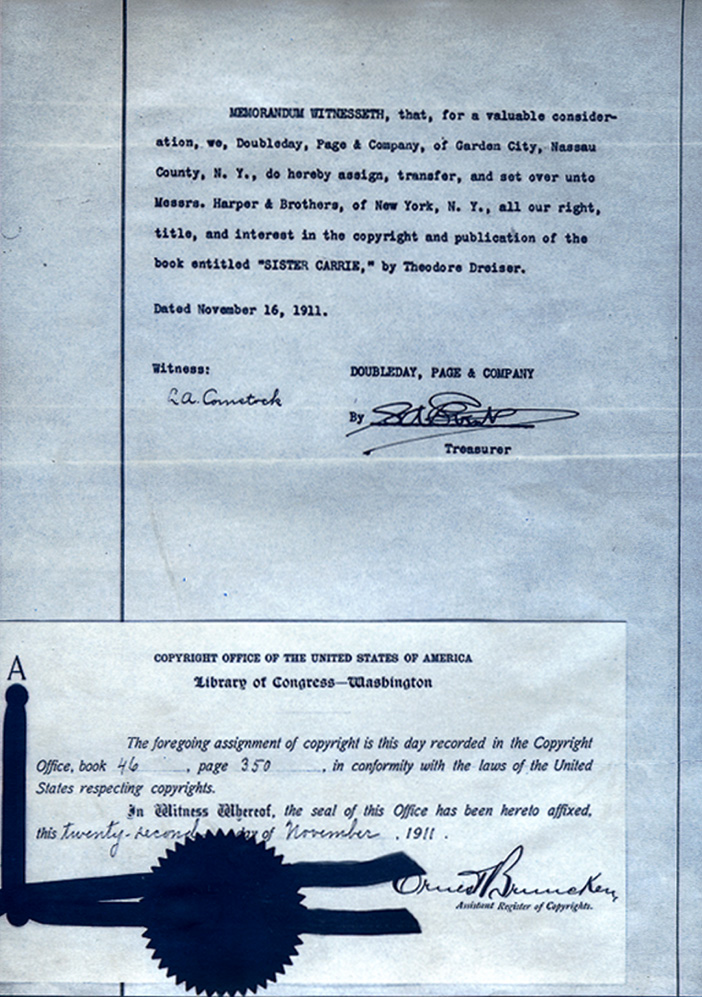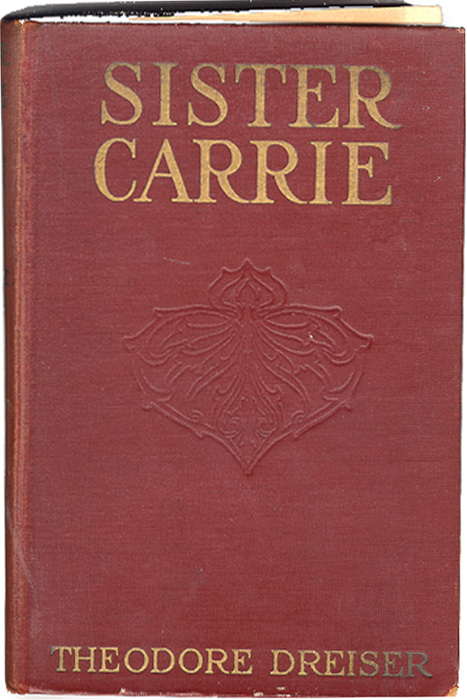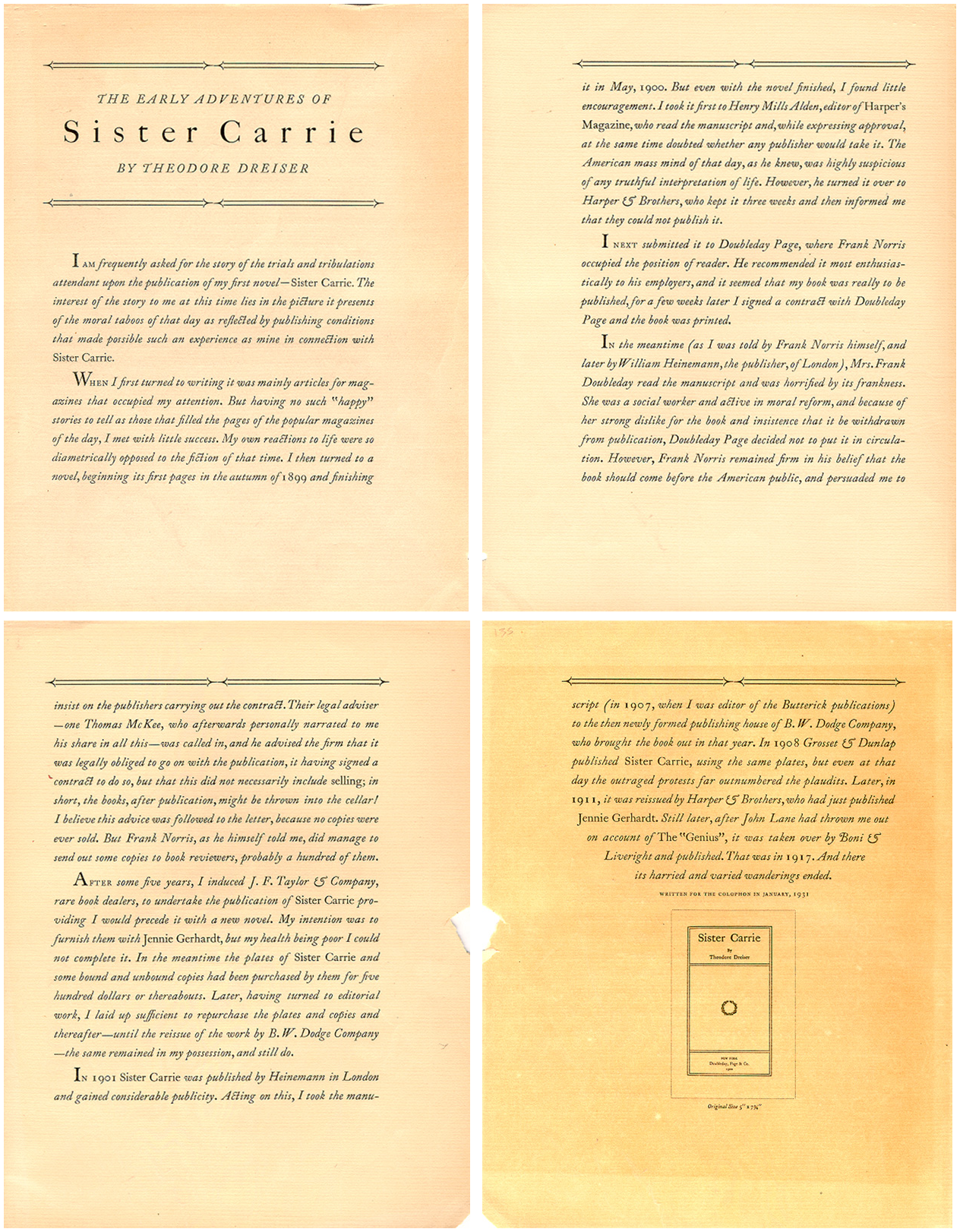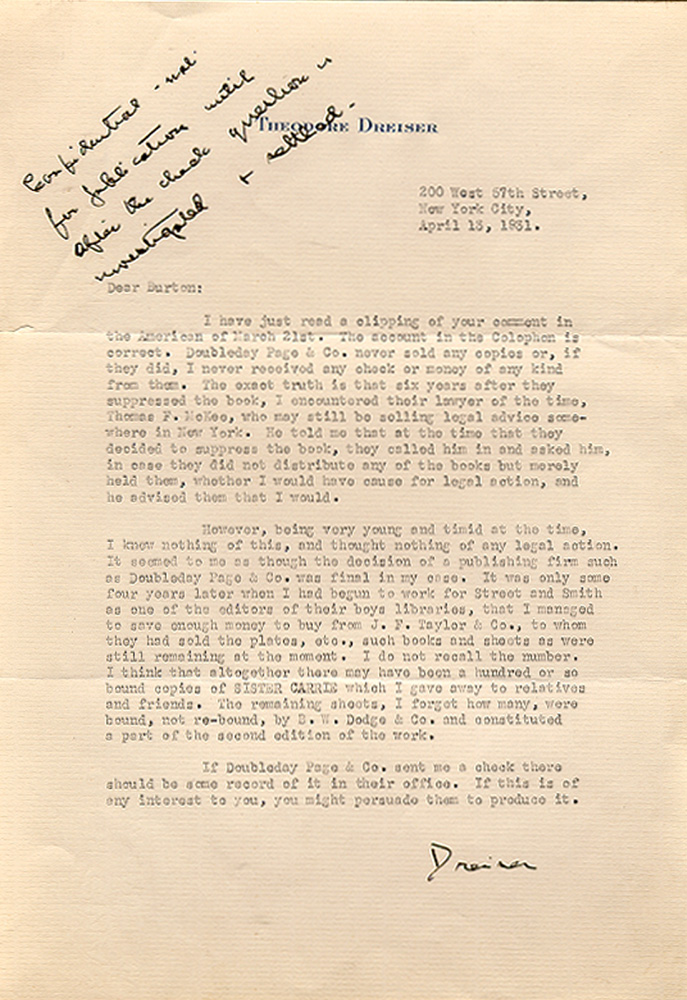After a round of blue-pencilling meant to remove the last objectionable features from the text, Sister Carrie was published on 8 November 1900. Frank Norris sent out some 127 review copies; the notices were mixed. Some reviewers complained about the unpleasantness of the story, calling it depressing and pessimistic, but others praised the skillful realism and noted the power of the themes and characters. Without support from its publisher, however, Sister Carrie was a flop. Only 456 copies were sold, netting Dreiser a paltry $68.40 in royalties.
A British edition appeared in 1901 from the firm of Heinemann; this text was abbreviated by Arthur Henry in order to make the book conform to the length restrictions of Heinemann's "Dollar Library of American Fiction." Reviews in the British press were generally favorable, though not as positive as Dreiser would later claim. In 1907 Dreiser himself arranged for a reprint of Sister Carrie by the firm of B. W. Dodge and Co., a remainder house in which he had a financial stake. This republication brought the novel to the attention of new readers and reviewers and prepared the way for a second reprint, this one by Harper and Brothers in 1912--an irony, since Harpers had rejected the novel originally in 1900. In the years after 1912, as Dreiser published more fiction and rose to a prominent position in American letters, Sister Carrie became a famous novel. The story of its suppression by Doubleday was a rallying point for forward-looking intellectuals and a paradigm for the suppression of artistic freedom by the forces of puritanism and Comstockery.
Fig. 1: The British publisher received a copy of Sister Carrie from Frank Norris. Impressed with the novel, Heinemann wanted to publish the work for his Dollar Library of American Fiction, whose price per volume was fixed at four shillings (equivalent to the American dollar). The current length of the novel was too long to print and sell at that price, so Arthur Henry was enlisted to "abridge" Sister Carrie for this edition.
Fig. 2: Doubleday finally agrees to leave the title as is but demands that "all the names of real persons should be changed."
Fig. 3: The first report compiled shows 558 copies received from the bindery with only 97 still on hand. Copies sold equaled 334; editor's copies equaled 127. The second report reveals that 100 more copies were bound since the last report but only 117 were sold (an additional 2 were editor's copies). The third is a final report indicating the sale of all remaining copies of Sister Carrie to the publisher J. F. Taylor, which was considering reissuing the novel.
Fig. 4: This letter informs Dreiser that Heinemann wants to publish Sister Carrie, if it can be significantly shortened.
Fig. 5: Although very interested in publishing Sister Carrie and marketing the book in England, publisher William Heinemann needed the work to "fit" within the printing confines of his series, "The Dollar Library of American Fiction." Over one hundred pages-worth of text were excised from the narrative. On the first page, for example, the entire second paragraph of the Doubleday edition is simply removed.
Fig. 6: In 1907 Ben W. Dodge, formerly of Dodd, Mead, wanted to start his own publishing house; at the same time Dreiser was looking for a way to reissue Sister Carrie. Whether to insure that the new publishing company of B. W. Dodge & Company got off the ground or to insure that the corporation would do right by its reissue of Sister Carrie, Dreiser invested $5,000 of his own money into the business, becoming secretary and editor at the firm.
Fig. 7 - Fig. 8: In the typed addendum to this agreement to publish Jennie Gerhardt, Harper & Brothers agree to publish a "new edition of the work [Sister Carrie] upon the same terms as those herein mentioned for "JENNIE GERHARDT."
Fig. 9: As part of Dreiser's contract with Harper & Brothers, the firm agreed to reissue Sister Carrie, assuming that copyright would be transferred from Doubleday and the original plates safely delivered.
Fig. 10: Having first passed on Sister Carrie in 1900, Harper & Brothers ultimately entered into a multi-book agreement with Dreiser: it included the publication of his second novel, Jennie Gerhardt, and the re-issue of the Doubleday-version of Sister Carrie.
Fig. 11: Sister Carrie was ultimately vindicated critically and commercially, and the story of its troubled publication history took on new interest. In 1931 Dreiser published an essay meant to address that interest and set the record straight.
Fig. 12: In response to a published comment by Rascoe about "The Early Adventures of Sister Carrie," Dreiser iterates the accuracy of his statements and repeats that "Doubleday Page & Co. never sold any copies or, if they did, I never received any check or money of any kind from them."
